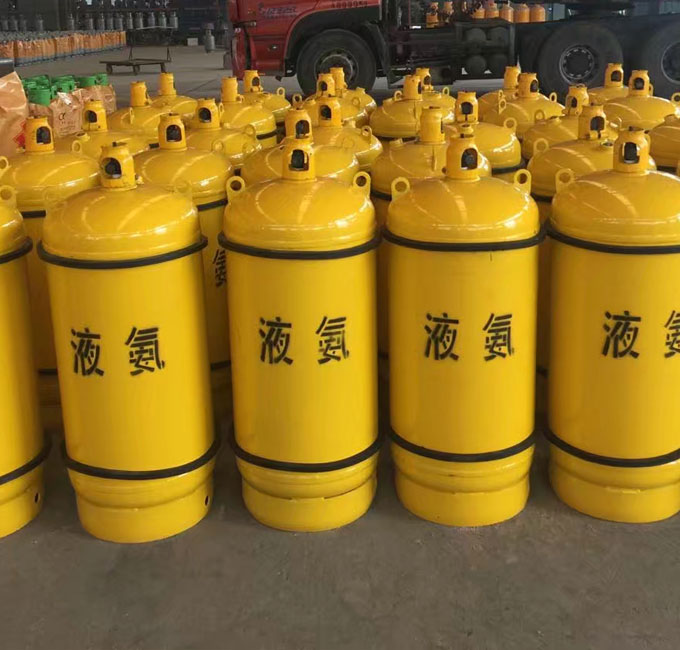Ammonia
Chemical formula: NH3
CAS login No.: 7664-41-7
Appearance: colorless with pungent odor
Molecular weight: 17.031
Purity: 99.9%
Package: 40L
Net weight of gas: 20kg
Name | Purity | Cylinder volume | Filling capacity | Common valve model |
liquid ammonia | 99.9% (3n) /99.999% (5N) | 4L | 2kg | Cga-660 |
liquid ammonia | 99.9% (3n) /99.999% (5N) | 8L | 4kg | Cga660 |
liquid ammonia | 99.9% (3n) /99.999% (5N) | 40L | 20kg | Qf-11/cga660 |
liquid ammonia | 99.9% (3n) /99.999% (5N) | 47l | 25kg | Cga660 |
liquid ammonia | 99.9% (3n) | 800L | 400kg | Qf-11 |

Gas description
Ammonia, ammonia, NH3, colorless gas. It has a strong pungent smell. Density 0.7710. Relative density 0.5971 (air =1.00). Easy to liquefy into colorless liquid. It can be liquefied under pressure at normal temperature (critical temperature 132.4 ℃, critical pressure 11.2 MPa, i.e. 112.2 atmospheric pressure). Boiling point -33.5 ℃. It is also easy to solidify into snow like solid. Melting point -77.75 ℃. Soluble in water, ethanol and ether. At high temperature, it will decompose into nitrogen and hydrogen, with reduction effect. It can be oxidized to nitric oxide in the presence of catalyst. It is used to produce liquid nitrogen, ammonia, nitric acid, ammonium salt, amine, etc. It can be directly synthesized from nitrogen and hydrogen. It can burn the mucous membranes of skin, eyes and respiratory organs. If people inhale too much, it can cause lung swelling and even death.
Main uses of the product
1. Used in chemical, food, pharmaceutical and other industries.
2. Liquid ammonia, ammonia water, nitric acid, ammonium salt and amine, etc.
3. Chemical fertilizer, refrigerant, chemical raw materials, etc.
4. Used for large scale integrated circuit decompression or plasma CVD to grow silicon dioxide film.
5. Refrigerant and preparation of ammonium salt and nitrogen fertilizer.
6. Quality assurance and quality control in environmental monitoring, analysis and testing can also be used for instrument calibration, method verification and technical arbitration.
Ammonia is a colorless gas with strong pungent odor. The sources of ammonia in livestock and poultry houses mainly include two aspects: first, ammonia in gastrointestinal tract comes from feces, urine and gastrointestinal digests. Urinary nitrogen mainly exists in the form of urea, which is easy to be hydrolyzed by urease to produce ammonia. On the other hand, it is produced by decomposing the through the corruption of organic substances such as accumulated feces and urine, feed residues and bedding grass. When the padding is wet, the pH is appropriate, the temperature is high, there are many faeces and the air circulation is not smooth, the production of ammonia is faster. The concentration of ammonia in livestock and poultry houses depends on the temperature, feeding density, ventilation, ground structure, feeding management level, fecal pollution removal, etc. Because ammonia is easily soluble in water, the concentration of ammonia is relatively high when the humidity of the enclosure is high.









